 66 completed under Project 204/204E 1960-68
66 completed under Project 204/204E 1960-68MPK-1 to 136 (random numbers), in service until 2005, also used by the Bulgarian and Romanian Navies.
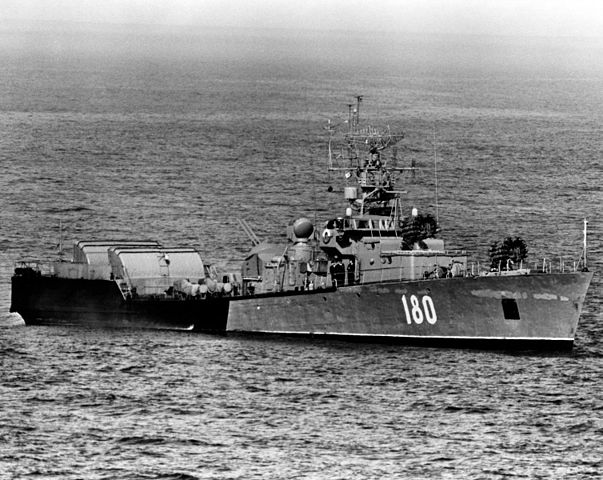
Project 204 (NATO Poti class were sixty six anti-submarine warfare (ASW) corvettes built for the Soviet Navy and the first Soviet warships ever powered by gas turbines, with tunneled propellers for a very shallow draught, elabling them to perform coastal ASW patrols. They were armed with a twin 57 mm gun mounting for self-defence and a combination of RBU rocket launchers and heavy acoustic torpedoes to hun down US submarines. Construction in three yards ceased in 1968, but they were also exported to Romania and Bulgaria as only foreign users of the type. #coldwar #project204 #poticlass #aswcorvettes #antisubmarienwarfare #corvette #sovietnavy #sovietskyflot
Development
Designated “Maly Protivo Lodochny Korabl” (Small Anti-submarine Ship) the ship of Project 204 departed from WW2 light sub-chasers types used by the Soviet Navy, not the mass-produced Kronshtadt and SO1 classes. The advantage of that up-scaling was of course to to mount larger guns for a more robust defense, longer range and heavier armament, following the evolution of potentiual enemy submarines, notably in NATO, such as the first SSNs derived from USS Nautilus. They were also the first large Soviet warships with gas turbines and thus became the fastest ASW warships ever constructed at the time in order to chase these new SSNs that promised potential speeds in excess of 30 knots.
Project 204 were essentaially a modification and further development of Project 201 boats. Development start was assigned in 1956 to Zelenodolsk Design Bureau. A.V. Kunakhovich became chief designer, captain 2nd rank N.D. Kondratenko appointed chief observer. Standard displacement was increased to 440 tons, and the armament increased significantly. After trials of the ship down the line, its designers were awarded the Lenin Prize.
What they did for the powerplant indeed was revolutionary. They had the propellers installed in stern wells, with nozzles. They were were rotated by M-504 diesel engines, which in turn rotated at high speed behind D-2K gas turbine compressors, which pumped air into the propeller wells to create additional thrust. This unique arrangement doubled the speed compared to previous Project 201 vessels and answered one of the main specifications, chase down faster SSNs. Such installation was also tested previously on Project 35 patrol ships, but with classic external props, there was no increase in speed, and it revealed not suitable in many other respects. But the success of the new arrangement, done thanks to the collaboration of specialists of cavitation and fluid mechanism helped to shape this unique arrangement.
Initially, B.K. Ilyinsky was considered its author, but after the collapse of the USSR, newly released information revealed actually it was K.A. Putilov in 1946. After a meeting with Iosif Stalin on improving sub-hunters performances in coastal waters, he worked with scientists on a new power plant, but without funding it went nowhere. Wuth the revelation of USS Nautilis however, his concept was resurrected. Help was provided also by an unlikely ally, the NKVD, which helped find at the Department of Physics of the Moscow Aviation Institute (K.A. Putilov) a group led by A.V. Volkov, working on the adaptation of jet engines for ships.
In ten days, a laboratory was organized, headed by K.A. Putilov, but results did not came at first. Only the 1953-55 first full-scale tests carried out made it possible to define a workable solution and power plant. In 1951, the Central Research Institute Krylov was at the head of the Ministry of Shipbuilding for scientific support. It managed at the final stage to appoint its representative B.K. Ilyinsky, replacing K.A. Putilov’s after he passed out, and brought research work to its conclusion.
Also in the specifications, the design saw the Anti-submarine armament precised. Due to the lack of free space, despite the size, and the use of new acoustic, homing torpedoes, it was now possible to have simple, fixed single tubes. They were to fire 400-mm SET-40 anti-submarine torpedoes. This was complemented by also a relatively new (but soon stadard) RBU-6000 launchers. As thyey were still not ready, the previous RBU-2500 were installed on the first two hulls as a provisional measure. The artillery consisted of a twin automatic 57-mm AK-725 turret, but also the configuration placing both the rocket launchers forward on superfiring position for the best arc of fire, had the turret used for self-defence relocated amidships. Again, the first two ships differed by having, also provisionally, an open ZIF-31 mount. The turret was controlled by the new “Bars” control radar. The way it was placed was far from ideal, but there was really no choice as the stern space wasoccupied by humongus air intakes necessary for the propeller tunnels and essentual to the main power plant. For situational awareness, the Rubka radar was installed, while for unerwater surveillance, the Hercules-2M hull sonar was chosen, complemented by a Bizan-4B complex, the first production dipping sonar in Soviet inventory.
Construction
These ships were built in Khabarovsk, Zelenodolsk and Kerch, these 66 units (project 204) were specialized in coastal ASW control and cheaper than the class Petya or Mirka frigates. They had new M2 gas turbines, giving them 38 knots, the best speed ever recorded by a Soviet ship of this type. The vents of these turbines exceeded the stern structure, which also housed two ASM grenades bins. The first units (there is no Poti I or Poti II) were equipped with the open version of the twin 57 mm AA, and two ASW rocket launchers type RBU 2500. They also had 4 ASW torpedo tubes (fixed) 406 mm, replaced on the three units delivered in 1937 to Romania by standard heavy torpedo 533 mm TTs. Three other units were delivered to Bulgaria in 1973.
Three Yard built 66 ships, 31 at Gorky (Zelenodolsk), 24 at Zaliv (Kerch) and 11 at Khabarovsk. Six were later transferred to the Bulgarian Navy and became “Hrabri”, “Strogi”, “Letyaschi”, “Bezstrashni”, “Bditelni” and “Naporisti”. Three ships went as export (paid for) by the Romanian Navy and known as export project 204-E, with a simpler layout. They were the only variant known for these mass-built vessels. It turned out that these ships arrived in the fleet during a period of rapid growth in combat capabilities both of submarines and aviation and became obsolete at least in armament and sensors. To such extent the Commander-in-Chief ordered the development of a new ship with increased air defense capabilities and a better sonar system to become the the workhorse of the fleet.
The Poti class ended in all four fleets of the Soviet Navy: Black Sea Fleet had 17 ships, the Pacific fleet obtained 11, the Baltic obtained 22 and Northern fleet 11 ships. In the mid-1980s until the collapse of the Soviet union they were all of decommissioned, or converted as experimental vessels, or training.
Accurate information on the fate of these ships is scarce, but it appears that all units (except those transferred) were in service as 1980 started. In 1990 les than 50% were still “active” whatever their status and conditions. The Black Sea Fleet’s website still showed 17 Poti class active (including one until 1975), 12 by 1990, two 1998, but as experimental vessels. None survived to this day.
These were the first large Soviet gas turbine warships, featuring this revolutionary M-2 engine and achieving 38kts, making them the fastest Soviet ASW ships ever built thanks to their propellers in thrust tubes, exhaust through ports above them in the transom, as well as air compressors for added thrust.
Modernizations started in 1970, with MPK-150 receiving for trials the new VGS-2 Oka-M sonar, while MPK-74 and MPK-83 tested the MG-7 Braslet sonar, MPK-74 received two UB-16-57UMP decoy launchers and two PK-16 decoy launchers.
See also Soviet/Russian Corvettes and Frigates pages.
Design of the class
Hull and general design

Corvettes of Poti class measured 59.4 metres (194 ft 11 in) long with a beam of 7.9 m (25 ft 11 in) and a draught of 2.0 m (6 ft 7 in). They had a standard displacement of 508 tonnes (500 long tons) and 589 t (580 long tons) fully loaded. The design overall looked very peculiar. The hull design in particular. Seen from the side, it was flush-deck, with a raised aft section, which underwater profile was shaped in a very peculiar way due to the absence of propeller shafts or struts. This made them able almost to beach anywhere and still be able to stay undamaged. This made perfect shallow waters operations, coastal and on the continental shelf, the Baltic and black sea. Their complement was 80 between officers and ratings.
The hull entry lines forward were very fine, translated on deck, despite the flare, to an arrowhead like profile, with a larger aft section ending on an equally large transom stern. The hull was shaped almost like a trimaran aft, with three small rudders. The profile was peculiar, with the two RBU launchers taking most of the fore section, followed by a small, compact and open bridge structure, which vision was obstructed by the “B” RBU launcher. It was followed by a the lattice mainmast supporting radars and aerials. Then came a small “island” structure supporting the artillery control radar, and aft communication antennae. Both the turret was installed there, amidships, as well as the four torpedo tubes, two pairs either beam, oriented forward to an angle of c20° from the axis. The aft raised section devoted to the powerplant was marked by the four massive air intakes, turned backwards, feeding both the engine and tunnel, making these small ships quite unique in appareance and unlike nothing else.
Powerplant
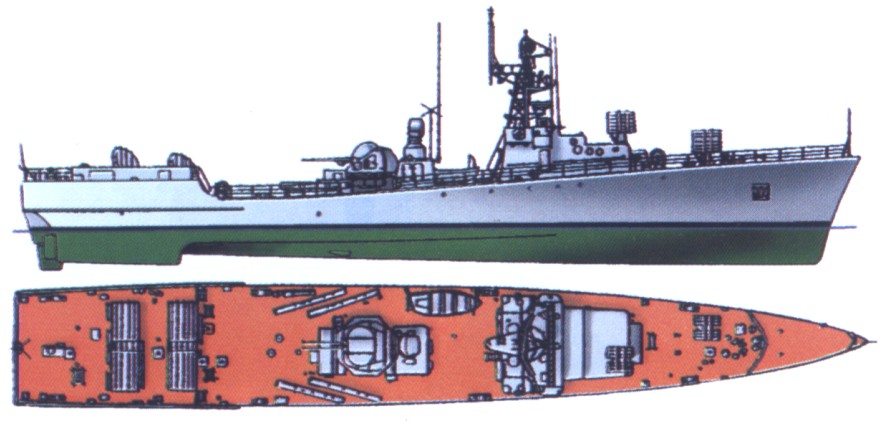
The ships were powered by a two shaft system, combined diesel and gas (CODAG) propulsion. In order, there were two M503A diesel engines rated for 6,000 kW (8,000 bhp) as primary power source. They could be used alone to power electrical systems aboard when the ship was in port. They turned through a gearbox and demultiplicated gears to augment rpm, the M-2 gas turbines, which provided the 22,000 kilowatts (30,000 shp) -properly amazing for their size- which in turn turned the two propellers, having a short shaft. In ways it was the same as for the Mirka class but managed differently.
They were mounted in thrust tubes extended all the way to the transom stern. The gas turbines exhausted through ports in the transom instead of classic funnels. They also created a powerful air draft and powered air compressors exhausting into the thrust tubes. This extra thrust was the “secret weapon” in this propulsion design. This gave them the unprecedented speed of 38 knots (70 km/h; 44 mph), until then reserved to Fast attack crafts. The range still thanks to diesel was 4,500 nautical miles (8,300 km; 5,200 mi) at 10 knots (19 km/h; 12 mph) which was perfectly viable in their restricted area of operation. This fell to 520 nautical miles (960 km; 600 mi) at 37 knots (69 km/h; 43 mph) when chasing a submarine. USS Nautilus at the time was “only” capable of 23 knots at best (43 km/h; 26 mph). There was room for manoeuver here. On the next gen Los Angeles class, it was closer to 33 kts (classified).
Armament

Single turret AK 725
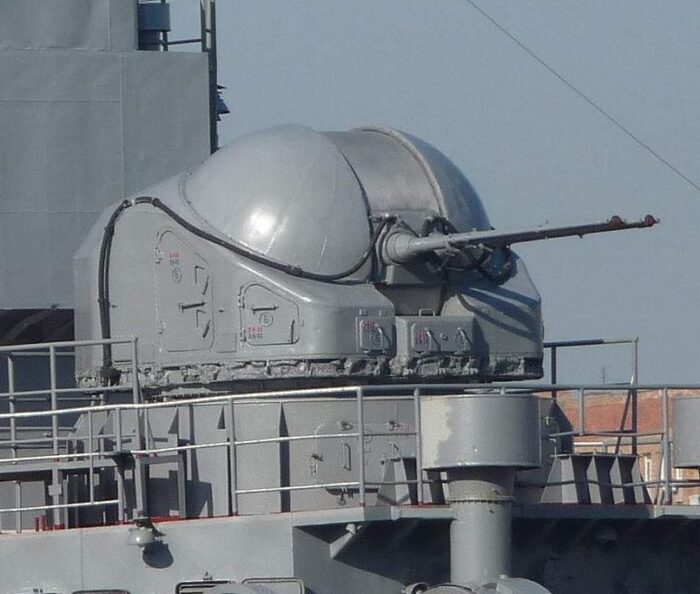
Twin 57mm (2.2 in)/80 dual-purpose guns with 85 degree elevation, firing a 2.8-kilogram (6.2 lb) shell at 6 kilometres (3.7 mi) with 120 rounds per minute.
⚙ specifications AK 725 57mm/75 |
|
| Weight | 14,500 kgs. |
| Elevation | Radius 4,485 mm -10/+85 at 40°/s traverse 180° either side, 50°/s |
| Loading system | Belt fed |
| Muzzle velocity | m/s 1020 |
| Range | 6,700m (with self destruction fuse) |
| Guidance | Fire control Radar |
| Crew | 1 operator |
| Protection | 6 mm shield |
| Round | 2.8 kgs |
| Rate of Fire | 200 (per barrel) |
RBU-6000
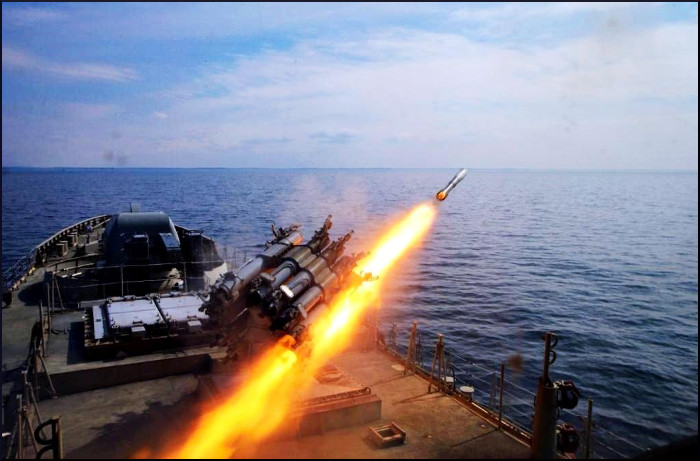
Forward were installed the two RBU-6000 rocket launchers. The first two had 16-tubed RBU-2500 ASW rocket launchers instead. On the remaining ships, it was the standard 12-tubed RBU-6000 ASW models. The RBU-6000 specs, early generation with RGB-60 rockets are:
⚙ specifications RBU-6000 Smerch-2 |
|
| Weight (mount) | 3100; 3500 + 4700 (autoloader) |
| Weight (rocket) | 113.5 kgs |
| Dimensions (mount) | 2 x 2.25 x 1.75 |
| Elevation/traverse | -15° to +65°, 180° |
| Dimensions (rocket) | 212 mm caliber, 2 meters long |
| Propulsion | Solid propellant, one stage |
| Speed | 800 kph, sink rate 11.6 m/s |
| Range | setup 350 m to 1700 m or 1500 m to 5500 m |
| Underwater target depth | 10 to 500/1,000 m, torpedo/divers 4–10 m |
| Guidance | Homing for later gen. 130 m |
| Payload | RGB-60 23 kg explosive warhead |
SET-40 Torpedoes
Some ships had from two to four 406 mm (16 in) single torpedo tubes launching the Type 40 ASW torpedoes. They had active/passive homing up to 8 nmi (15 km; 9.2 mi) and ran at 40 knots (74 km/h; 46 mph) to target, delivering a 100–150 kg (220–330 lb) warhead on contact. This Lightweight ASW torpedo entered service in 1962 after a 1959-1961 development by NII-400 Gidropribor and produced by Dvigatel. The name meant “Spetsialnaya Elektricheskaya Torpeda 40” for “special electric torpedo 40”, MGT-2, Izdeliye 241, NATO Type 40. It had the same parameters as the 400mm MGT-1 lightweight torpedo, divided into four compartments with in order the sensor, warhead, battery and engine compartment. Propulions is the scaled down SET-53M torpedo system, electric, single propeller with silver-zinc batteries seawater activated.
It was the first design with both active and passing homing, 1st gen acoustic sensor with a 600 to 800 m range and Sapfir sensor partly based on recuperated US technology.
8 km range at 29 knots and a 80 kg with acoustic proximity fuse plus backup contact fuse. They were installed on the Poti class in four single angled deck mounted tubes with powder charges and datalink with a fire control system plus backup manual input. A successful design it was replaced by the SET-72 and is often compared to the US 324 mm Mk46.
⚙ specifications SET-40 |
|
| Weight | 550 kg |
| Dimensions | 4.5 m x 400 mm |
| Propulsion | Electric motor, MZ-2 silver-zinc batteries |
| Range/speed setting | 7.5 km at 28 kt, 100 m depth, target depth 20 to 300 m |
| Warhead | 80 kg Torpex or assimilated |
| Guidance | Active and passive homing, 600-800 m active, sonar proximity fuse |
Sensors
The Poti class had the Don 2 surface search radar, the “Strut Curve” air search radar, and “Muff Cobb” fire control radar. They also had a hull-mounted high-frequency Herkules sonar and “Hormone” dipping sonar. For electronic countermeasures two “Watch Dog” units were also used when upgraded.
General aerial watch radar: MP-302 “Rubka”
Navigation radar: “Vaigach” (NATO Don-2 or Spin Trough)
Main hull sonar, active: “Hercules-2M”
Fire control: MP-103 “Bars” (NATO Muff Cob)
Electronic weapon jammer “Bizan-4B” (2x NATO Watch Dog)

⚙ specifications |
|
| Displacement | 508, 589t Fully loaded |
| Dimensions | 59.4 x 7.9 x 2 m (194 ft 11 in x 25 ft 11 in x 6 ft 7 in) |
| Propulsion | 2 shaft CODAG, 2 gas turbines 22,371 kW (30,000 shp), 2 M503A diesels 5,966 kW (8,000 bhp) |
| Speed | 38 knots (70 km/h; 44 mph) |
| Range | 4,500 nmi (8,300 km; 5,200 mi)/10 knots, 520 nmi (960 km; 600 mi) 37 kts |
| Armament | 1×2 57 mm (2.2 in), 2 × RBU-6000 ASWRL, 1×4 406 mm (16 in) ASWTTs, see notes |
| Sensors | Strut Curve, Muff Comb, Don 2 radars, Sonar: Herkules (hull mounted) Bronza VDS |
| Crew | 80 |
Exports
 Bditelni class (1975)
Bditelni class (1975)
Photo wanted
post-World War II, Bulgaria entered the Soviet sphere of influence and in the 1950s, the whole Bulgarian military, including the navy, had been re-organised along Soviet lines. Soviet armaments were then sold, including for the Navy. In 1955, Bulgaria acquired Kronstahdt-class submarine chasers to bolster the Black sea ASW forces. Bulgaria however later required replacements as they were obsolete in the 1970s and obtained six Poti-class, transferred from 1975 to 1990. They were the former MPK-59, MPK-77 and MPK-109 for those known with certainty. By 2008 they were all discarded.
These were in order:
-#44 Khrabri in 1986, Decommissioned 2005, sold.
-#45 Strogi 1990[, Decommissioned 1993, sold for BU Turkey 1997.
-#46 Bezstrashni in 1990. She had her Gas turbines removed in 1994, used a training hulk and decommissioned in 2005, sold for BU.
-#41 Letjashhi was the first transferred on December 1975. She was Decommissioned in 2005, sold.
-#42 Bditelni also transferred December 1975, Decommissioned 2005, sold
-#43 Naporisti was for former MPK-148, transferred December 1975, Decommissioned 1993, sank during towing to Turkey for BU in 1997.
 Contraamiral Nicolae Cristescu class (1968)
Contraamiral Nicolae Cristescu class (1968)
Photo wanted
Romania also was under the Soviet Union’s sphere of influence when joining the Warsaw Pact and from 1964 the local industry massively took on national procurement, and started to diverge from Soviet direction with a rift between countries widening in 1968 after the invasion of Czechoslovakia. Three Poti-class were nevertheless to the Romanian Navy in 1970 to carry out ASW tasks on the Black sea from Constanta. These were early vessels downgraded with the RBU-2500 ASW rocket launchers and 533 mm (21 in) with the Type 53 (SET-53) torpedoes. They came from Zelenodolsk yard, transferred upon completion, with MPK-106 and MPK-125 among them:
#31 Contraamiral Nicolae Cristescu, transferred 5 December 1968, Decommissioned after 1992
#32 Contraamiral Nicolae Negru, transferred 1 April 1969, Decommissioned after 1992
#33 Contraamiral Irimescu, transferred 20 October 1969, Decommissioned after 1992
Read More/Src
Books
Couhat, Jean Labayle, ed. (1986). Combat Fleets of the World 1986/87. Annapolis, Maryland: Naval Institute Press. ISBN 0-85368-860-5.
Gardiner, Robert; Chumbley, Stephen & Budzbon, Przemysław, eds. (1995). Conway’s All the World’s Fighting Ships 1947–1995. Annapolis, Maryland: Naval Institute Press. ISBN 1-55750-132-7.
Moore, John E. (1975). The Soviet Navy Today. London: MacDonald & Jane’s. ISBN 0-356-08335-7.
Sharpe, Richard, ed. (1991). Jane’s Fighting Ships 1991–92 (94 ed.). Surrey, United Kingdom: Jane’s Information Group. ISBN 0-7106-0960-4.
Wertheim, Eric, ed. (2013). The Naval Institute Guide to Combat Fleets of the World (16th ed.). Annapolis, Maryland: Naval Institute Press. ISBN 9-7-815911-4954-5.
Links
en.wikipedia.org
on ru.wikipedia.org/
russianships.info/
vimpel.boinaslava.net
bastion-opk.ru/
www.and-kin2008.narod.ru
war-book.ru/
47br-ovra.com/
wikidata.ru-ru.nina.az/
forum.sevastopol.info/
weaponsystems.net SET-40
web.archive.org atrinaflot.narod.ru/
Videos
Model Kits
forums.airbase.ru detailing of project 204
3D
The Poti class in service

Shipyard No. 532 named after. B.E. Butomy (Kerch Yard), 24 built
 MPK-15
MPK-15
Hull number N°801, Laid Down 26.11.1958, launched 30.03.1960, commissioned 29.12.1960. The was initially ordered on October 15, 1958 in Kerch, and entered service on December 29, 1960 assigned to the Black Sea Fleet on June 18, 1964 and lead ship of this project. On June 5, 1979, she was withdrawn from service, reclassified as training vessel until stricken from the fleet on May 31, 1984 then planned for disarmament, dismantling and sale on October 1, 1984.
 MPK-16
MPK-16
N°802, laid down 17.01.1959, launched 27.07.1960, commissioned 31.12.1960. She was ordered on October 15, 1958 like her sisters, and entered the Black Sea Fleet on June 18, 1964. She was decommissioned on May 21, 1981, sold for disposal on October 1, 1981.
 MPK-72
MPK-72
MPK-72 (N°803), was laid down 12.08.1959, launched 30.12.1960, commissioned 30.09.1962. She was assigned to the Black Sea Fleet on 06/18/1964. On September 1, 1971, she was withdrawn from service, mothballed and laid up in Ochakovo, but on August 1, 1989 reactivated and back into service. On April 19, 1990, she is decommissioned and stricken, on disposal by October 1, 1990, BU in Sevastopol.
 MPK-75
MPK-75
MPK-75 (N°804) was laid down 18.10.1959, launched 29.04.1961 comissioned 26.10.1962. She joined the Black Sea Fleet on 06/18/1964 and from January 23, 1984 to May 22, 1986 she had a major overhaul at Sevmorzavod S. Ordzhonikidze yard in Sevastopol. On June 26, 1988, she was decommissioned, and by October 4, 1988 transferred to Sevastopol DOSAAF Naval School for training -fate unknown.
 MPK-88
MPK-88
MPK-88 (N°805) was laid down on 22.03.1960, launched 25.08.1961 and commissioned on 19.11.1962. She is accepted in the Black Sea Fleet on 06/18/1964. On 10/30/1966 she is decommissioned, mothballed and laid up in Ochakovo, but reactivated on 08/01/1971. On June 25, 1985, she is decommissioned again, but on July 4, 1985 like her sister she is transferred to the Sevastopol DOSAAF Naval School for training, stricken on October 1, 1985.
 MPK-148
MPK-148
MPK-148 (N°806) was laid down on 22.07.1960, launched on 18.01.1962, commissioned on 28.12.1962. She joins the Black Sea Fleet on 06/18/1964. On September 1, 1971, she is decommissioned, mothballed and laid up in Ochakovo, never reactivated and by May 26, 1983, stricken and sold for BU abroad.
 MPK-58
MPK-58
MPK-58 (N°807) was laid down on 10.02.1961, launched 29.04.1962 and commissioned 31.07.1963. She joins the Black Sea Fleet on 06/18/1964. She has a major overhaul from September 21, 1978 to May 22, 1986 at Sevmorzavod (S. Ordzhonikidze yard, Sevastopol=. On October 1, 1987, she is decommissioned, then sold for BU on October 1, 1987 in Sevastopol.
 MPK-77
MPK-77
MPK-77 (N°808) was laid down on 3.05.1961, launched 13.10.1962 and commissioned on 30.09.1963. She enters the Black Sea Fleet on 06/18/1964 and is decommissioned on 10/30/1966, mothballed and laid up in Ochakovo, never reactivated. Instead on 12/17/1982 she is stricken and donated to Bulgarian Navy.
 MPK-85
MPK-85
MPK-85 (N°809) was laid down on 7.07.1961, launched on 22.04.1963, commissioned 29.12.1963. On 06/18/1964 she is transferred via the inland water systems from Azov to the Baltic Sea and enters the baltic Fleet. On June 20, 1987, she is decommissioned, stricken and sold for BU on October 1, 1987.
 MPK-14
MPK-14
MPK-14 (N°810) was laid down 3.10.1961, launched 25.09.1963, commissioned 31.12.1963. On 06.18.1964 she is transferred via the inland water system from Cherny in the Baltic Sea and included in the fleet. From December 21, 1967 to February 15, 1968, she had a major overhaul at SRZ-29 Tosmare, Liepaja (Libau). On October 1, 1972, she is decommissioned, mothballed, stored at Ust-Dvinsk (Daugavgriva) and reactivated on August 1, 1980, recommissioned. On June 20, 1987, she is decommissioned and sold for BU on October 1, 1987 in Riga.
 MPK-10
MPK-10
MPK-10 (N°811) was laid down 23.06.1962, launched on 30.01.1964, commissioned 30.06.1964. She joined the Black Sea Fleet on 07/8/1964. On May 4, 1989, she is decommissioned and sold for BU on October 1, 1989.
 MPK-62
MPK-62
MPK-62 (N°812), was laid down 19.02.1964, launched 3.09.1964 and commissioned 20.10.1964, from 1.08.1986 “OS-573”. She joins the Black Sea Fleet on October 26, 1964. From April 8, 1983 to March 7, 1986 she is overhaul and modernized at Sevmorzavod, S. Ordzhonikidze Sevastopol NyD. But she is decommissioned on 07/10/1986, reclassified as test ship and stricken on 07/12/1989, transferred to the Dnepropetrovsk young sailors club for educational purposes. Fate unknown.
 MPK-68
MPK-68
MPK-68 (N°813), was laid down 8.08.1962, launched 23.09.1964 and commissioned on 30.12.1964. She joins the Black Sea Fleet on 01/22/1965. On April 19, 1990, she is decommissioned, sold for BU on October 1, 1990 at Sevastopol.
 MPK-38
MPK-38
MPK-38 (N°814) was laid down on 29.07.1963, launched on 28.12.1964 and commissioned on 31.05.1965. Accepted in the Black sea fleet on 06/24/1965. Between 06/04/1982 and 01/01/1985 she has a major overhau modernization at Sevmorzavod in Sevastopol but is withdrawn from service and mothballed in Ochakovo, never reactivated. On 04/19/1990 she is recommissioned, then sold on 1.10. 1990, scrapped in Sevastopol.
 MPK-19
MPK-19
MPK-19 (N°815) was laid down on 31.12.1964, launched on 23.07.1965 and commissioned on 28.12.1965. She joined the black sea fleet on 01/15/1966. She has a major overhaul/modernization between 10.2 to 17.06.1981 and another from 17.12.1985 to 1.08.1986 at Sevmorzavod, Sevastopol. On April 19, 1990, it was expelled from the Navy in connection with its delivery to the OFI for disarmament, dismantling and sale; on October 1, 1990, it was disbanded and subsequently cut up for metal in Sevastopol.
 MPK-59
MPK-59
MPK-59 (N°816) was laid down on 12.03.1965, launched on 30.12.1965 and commissioned on 28.03.1966. She joined the Black sea fleet on April 18, 1966. On 30 October she is retired from service, deactivated, mothballed and laid up in Ochakovo. On 10/14/1975 she is decommissioned, stricke, then sold to the Bulgarian Navy.
 MPK-100
MPK-100
MPK-100 (N°817), was laid down on 09.07.1965, launched on 28.04.1966 and commissioned on 5.09.1966. Joins the Black Sea Fleet (BSF) on 09/15/1966. She is overhauled and modernized from 01/31/1975 to 06/26/1976 at Kerch NyD. Later she is again overhauled from 12/16/1983 to 05/22/1986 at Sevmorzavod, Sevastopol. On April 19, 1990, she is decommissioned, sold for BU on October 1, 1990.
 MPK-109
MPK-109
MPK-109 (N°818), was laid down 4.11.1965, launched on 26.08.1966 and commissioned 27.12.1966. She enters the BSF on 01/7/1967. On September 1, 1973, she is decommissioned, mothballed and laid up in Ochakovo. From August 24, 1981 to September 15, 1982 she is modernized at Sevmorzavod, Sevastopol, stricke, sold to the Bulgarian Navy.
 MPK-106
MPK-106
MPK-106 (N°819) was laid down 30.08.1966, launched 21.03.1967, completed on 30.06.1967. Transferred to the Romanian Navy.
 MPK-125
MPK-125
MPK-125 (N°820) was laid down on 28.02.1967, launched on 29.06.1967 and completed on 30.09.1967. Transferred to the Romanian Navy.
 MPK-128
MPK-128
MPK-128 (N°821) was laid down on 18.09.1967, launched on 10.01.1968 and commissioned on 30.04.1968. She joins the BSF on May 23, 1968. She is overhauled and modernized from November 14, 1975 to October 1, 1979 at Krasny Metallist shipyard A.M. Gorky, Zelenodolsk but is mothballed, laid up in Ochakov. On June 24, 1991, she is decommissioned, stricken, sold for BU.
 MPK-134
MPK-134
MPK-134 (N°822) laid down on 15.07.1967, launched on 4.05.1968 and commissioned on 30.09.1968, later exported to Romania (Project 204E).
 MPK-124
MPK-124
MPK-124 (N°823) laid down on 25.04.1968, launched on 12.09.1968 and commissioned on 30.12.1968, exported to Romania (Project 204E).
 MPK-44
MPK-44
MPK-44 (N°824), laid down 8.12.1968, launched 19.06.1969 and commissioned on 15.09.1969, later exported (Project 204E).
Shipyard N°340, Zelenodolsk, 31 ships
 MPK-56
MPK-56
MPK-56 (N°101) was laid down 23.10.1959, launched 7.04.1961, and commissioned 31.07.1963. By the summer of 1961 she is transferred via the inland water systems to Severodvinsk for commissioning tests, and enters service on 07/31/1963, joins in June 18, 1964 the Northern Fleet. From October 18, 1973 to April 24, 1974 she is modernized at SRZ-82, Roslyakovo. Decom. June 5, 1979, sold for BU October 1, 1979 in Murmansk.
 MPK-79
MPK-79
MPK-79 (N°102), laid down 19.08.1960, launched 7.06.1961, commissioned 31.12.1962. Built at No. 340 “Red Metalist” A.M. Gorky yard in Zelenodolsk in the Tatar Autonomous Soviet Socialist Republic, transferred via inland water systems to Severodvinsk for commissioning tests, entered service on December 31, 1962, accepted in the Northern Fleet on June 18, 1964. Overhauled from September 3, 1974 to January 6, 1975 at SRZ-82 Roslyakovo, decomm. 05/31/1989, stricken 10/1/1989, BU in Murmansk.
 MPK-84
MPK-84
MPK-84 (N°103) laid down 20.08.1960, launched 23.08.1961 and commissioned 22.09.1963 and from 10.07.1980 SM-261. She is transferred via inland water systems to Severodvinsk for commissioning tests, enters service on 09/22 1963, assigned on 06/18/1964 to the Northern Fleet. Decom. May 28, 1980, disarmed, used as target training vessel for exercises. September 10, 1986, stricke, sold for BU in Murmansk.
 MPK-150
MPK-150
MPK-150 (N°104) laid down 22.07.1960, launched 6.09.1961 and commissioned 20.06.1963. Transferred via inland water systems to Leningrad from completion and commission, joined the Northern Fleet (NF) on June 18. Decom. July 1, 1986, sold October 1, 1986.
 MPK-166
MPK-166
MPK-166 (N°105) laid down 21.03.1961, launched 4.12.1961, commissioned 20.06.1963. Transferred to Leningrad assigned to the Red Banner Baltic Fleet on June 18, 1964. Decom. August 1, 1980, mothballed, laid up in Ust-Dvinsk (Daugavgriva). May 4, 1989, stricken, sold, BU in Riga.
 MPK-156
MPK-156
MPK-156 (N°106), laid down 12.06.1961, launched 25.04.1962, transferred via inland water systems to Severodvinsk for acceptance tests, entered service on 11/30 1963, assigned to the NF on 06/18/1964. Decom. 05/31/1984, sold 10/1/1984 BU in Murmansk.
 MPK-13
MPK-13
MPK-13 (N°107) laid down 30.08.1961, launched 4.07.1962, commissioned 22.12.1963. Transferred via inland water systems to Severodvinsk, assigned on June 18, 1964 included in the Northern Fleet. Modernized 25.5 to 23.07.1976 and from 23.04.1981 at SRZ-82 Roslyakovo. June 25, 1985, lack of funding to continue, decommissioned, then stricken October 1, 1985.
 MPK-45
MPK-45
MPK-45 (N°108) laid down 18.11.1961, launched 6.08.1962, commissioned 31.12.1963. Transferred via inland water systems to Leningrad, assigned on June 18, 1964 to the Baltic Fleet. Decom. October 1, 1972, mothballed at Ust-Dvinsk (Daugavgriva). Reactivated on August 1, 1980. Overhauled and modernized from March 1, 1989 at SRZ-33, Baltiysk but o, April 19, 1990, due to lack of funding, decom. October 1, 1990, stricken, sold for BU to Baltiysk.
 MPK-50
MPK-50
MPK-50 (N°109), laid down 9.11.1961, launched 9.11.1962 and commissioned 30.12.1963. Transferred to Leningrad for acceptance tests, assigned to the BF on 06/18/1964. Decom. 10/30/1966, mothballed at Ust-Dvinsk, rectivated on 08/1/1980. Decom. April 19, 1990, sold October 1, 1990, Ust-Dvinsk, sank due to poor hull maintenance, reloated, towed, transferred for BU to a Latvian company.
 MPK-55
MPK-55
MPK-55 (N°110), laid down 18.02.1962, launched 28.10.1962 and commissioned 30.06.1964. Transferred via inland water systems to Leningrad, accepted July 18, 1964 BF. November 1, 1977 withdrawn from service, mothballed at Ust-Dvinsk, reactivated on June 1, 1986. Decom. June 24, 1991, sold for BU October 1, 1991 in Riga.
 MPK-70
MPK-70
MPK-70 (N°111) laid down 03.1962, launched 1963, commissioned 1964. In the spring of 1964 she transferred via inland water systems to Leningrad, entered service fall 1964, assigned BF on October 26, 1964 (Red Banner Baltic Fleet). Decom. October 1, 1972, mothballed Ust-Dvinsk. Stricken May 4, 1989 sold October 1, 1989 but sank while laid up in Ust-Dvinsk (hull maintenance), raised and transferred to a Latvian company, BU.
 MPK-63
MPK-63
MPK-63 (N°112) laid down 11.04.1962, launched 15.08.1963, commissioned 30.08.1964. Transferred via the inland water systems to the Sea of Azov, then Chernoe for acceptance tests, September 15, 1964 she was temporarily included in the Black Sea Fleet. Fall 1964, transferred via inland water systems to Severodvinsk, November 11, 1964 joins the Northern Fleet. From October 24, 1972 to April 24, 1974 she is moderniaed at SRZ-82 Roslyakovo. Reserve. October 1, 1981 mothballed at Dolgaya-Zapadnaya Bay (Granitny). June 1, 1984, Decommissoned and stricken June 26, 1988 left in Chervyanoye Lake Bay, sinking and now rotting (leaking hull).
 MPK-21
MPK-21
MPK-21 (N°113) laid down 8.08.1962, launched 12.06.1963, commissioned 15.12.1964. Transferred via inland water systems to the Azov Sea, and from there to the Black Sea for acceptance tests, entered service with the Black Sea Fleet on January 22, 1965. Summer of 1965, transferred again via inland water systems from Sevastopol to Belomorsk, and joins on June 24, 1965 the northern fleet. modernized 10/18/1973 to 05/27/1974 at SRZ-82 Roslyakovo. Decomm. June 20, 1987, sold for BU October 1, 1987, Murmansk.
 MPK-23
MPK-23
MPK-23 (N°114), laid down 15.10.1962, launched 23.07.1963, completed on 23.12.1964. She is transferred via inland water systems to Leningrad for commissioning tests, assigned to the Northern Fleet (NF) on January 22, 1965. Placed in reserve October 1, 1975 at Ust-Dvinsk. Decom. August 4, 1989 sold October 1, 1989, sank at berth (hull leaking). Raised and transferred to a Latvian company for BU.
 MPK-27
MPK-27
MPK-27 (N°115), laid down 22.02.1963, launched 5.11.1963, commissioned 30.06.1965. Transferred via inland water systems to Leningrad assigned to the NF on July 15, 1965, decom. May 4, 1989, stricken, sold October 1, 1989, BU in Riga.
 MPK-25
MPK-25
MPK-25 (N°116), laid down 23.02.1963, launched 30.04.1964, commissioned 28.09.1965. She is transferred via inland water systems to Leningrad for acceptance tests, assingned NF on 10/2/1965. Decom. 10/1/1986, mothballed Ust-Dvinsk; stricken 04/19/1990 sold for BU 10/1/1990 Riga.
 MPK-29
MPK-29
MPK-29 (N°117), laid down 16.05.1963, launched 3.06.1964, commissioned 30.09.1965. Transferred via inland water systems to the Azov Sea, then Black Sea for acceptance tests, joined the BSF KChF on October 21, 1965. Summer 1966, transferred via inland water systems from Sevastopol to Leningrad. August 20, 1966 transferred to the Baltic Fleet. April 19, 1990, decommission, sold October 1, 1990.
 MPK-18
MPK-18
MPK-18 (N°118) laid down 27.07.1963, launched 2.09.1964, commissioned 16.12.1965. Transferred via inland water systems to Leningrad from commissioning tests, January 11, 1966 joins the Baltic Fleet. Summer of 1966 transferred from Leningrad to Belomorsk, 08/20/1966 NF. From November 3, 1983 to November 15, 1984 modernized at SRZ-82 Roslyakovo. Decom. June 20, 1987, stricken October 1, 1987, 1998, laid up in Chervyanoye Lake Bay, sank.
 MPK-54
MPK-54
MPK-54 (N°119), laid down 6.11.1963, launched 17.11.1964, commissioned 24.12.1965. May 1965 transferred via inland water systems to the Azov Sea, Black Sea, joined the BSF on January 11, 1966. Summer of 1966, retransferred via inland water systems from Sevastopol to Belomorsk, koined the NF on August 20, 1966. Modernized from October 7, 1975 to June 10, 1977 and March 26 to July 12, 1985 at SRZ-82 Roslyakovo. Decom. June 26, 1988, stricken November 1, 1988, sank in Chervyanoye Lake Bay.
 MPK-74
MPK-74
MPK-74 (N°120), laid down 13.01.1964, launched 2.06.1965, commissioned 30.06.1966. Transferred via inland water systems to Leningrad from commissioning tests, enered the BF July 18, 1966. Decom.
on November 1, 1977, mothballed at Ust-Dvins, reactivated on June 1, 1986. Decom. June 24, 1991, stricken and sold October 1, 1991, BU in Riga.
 MPK-80
MPK-80
MPK-80 (N°121), laid down 23.03.1964, launched 5.07.1965, commissioned 10.08.1966. She is transferred via inland water systems to Leningrad from commissioning tests, joined the Baltic fleet on September 6, 1966. Transferred to the Northern Fleet on 03/04/1970 and from the Baltic to the White Sea but returned on 02/28/1986. Decom. May 4, 1989, strickzen, sold October 1, 1989, BU in Riga.
 MPK-86
MPK-86
MPK-86 (N°122), laid down 15.06.1964, launched 19.07.1965, commissioned 27.09.1967. Transferred via inland water systems to the Sea of Azov and Black Sea, joined the BSF on 10/8 1967 but on 02/13/1968 she is retransferred to the Northern fleet, via inland water systems from the Azov to the White Sea. From June 10, 1977 to November 27, 1985 she is modernized at SRZ-82 Roslyakovo. Decom
June 20, 1987, stricke, sold October 1, 1987, BU in Murmansk.
 MPK-90
MPK-90
MPK-90 (N°123), laid down 21.09.1964, launched 18.11.1965, commissioned 26.11.1966. She is transferred via inland water systems to Severodvinsk and by December 12, 1966 joins the NF. On July 10, 1986, she is decommissioned, stricken, sold October 1, 1986 buy sunk in Chervyanoye Lake Bay.
 MPK-92
MPK-92
MPK-92 (N°124), laid down 8.07.1965, launched 24.05.1966, commissioned 24.12.1966. She is transferred via inland water systems to Leningrad and by January 7, 1967 joins the BF. On 10/1/1975, placed in reserve, mothballed at Ust-Dvinsk. Decommissioned 04/19/1990, sank, raised transferred for BU in Latvia.
 MPK-95
MPK-95
MPK-95 (N°125) was laid down on 1965, launched 1966 (dates unknown) but commissioned on 29.06.1967. In the summer of 1966, transferred to Severodvinsk and joins the NF on July 20, 1967. Decom. June 26, 1988, stricken September 1, 1988, laid up in Chervyanoye Lake Bay, sank.
 MPK-97
MPK-97
MPK-97 (N°126) was laid down 1.03.1966, launched 17.09.1966, commissioned 31.08.1967. Spring 1967, transferred via inland water systems to Leningrad, joins the BF on September 14, 1967. Decom. April 19, 1990, stricken October 1, 1990, BU in Riga.
 MPK-83
MPK-83
MPK-83 (N°127) was laid down 5.05.1966, launched 2.11.1966, commissioned 30.09.1967. Transferred to the Azov, then Black Sea from commission, joins the BSF on October 13, 1967. Retransferred fall of 1967, from Azov to the Baltic Sea joins the BF on December 14, 1967. Decom. July 10, 1991, BU August 1, 1991 in Riga.
 MPK-94
MPK-94
MPK-94 (N°128), laid down 12.07.1966, launched 29.01.1967, commissioned 30.11.1967. Spring 1967, transferred to Leningrad joins the BF on December 26, 1967. Decom. August 1, 1980, mothballed in Ust-Dvinsk, stricken April 19, 1990, laid up in Ust-Dvinsk, sank, raised BU in Latvia.
 MPK-98
MPK-98
MPK-98 (N°129) laid down 21.09.1966, launched 6.05.1967, commissioned 25.12.1967. Transferred to the Sea of Azov, Black Sea, koins the BSF on January 11, 1968. Transferred to the BF on July 15, 1968, from the Sea of Azov to the Baltic. Decom. June 20, 1988, stricken October 1, 1988, sold for BU.
 MPK-102
MPK-102
MPK-102 (N°130), laid down 11.11.1966, launched 30.06.1967, commissioned 30.06.1968. She was transferred to Leningrad and joins the BF on 07/25 1968, decom. June 24, 1991, stricken and sold October 1, 1991.
 MPK-119
MPK-119
MPK-119 (N°131) laid down 20.03.1967, launched 5.11.1967, commissioned 25.09.1968. She is transferred to the Sea of Azov, Chernoe, joins the BSF on 10/21/1968. Retransferred from the Azov Sea to the Baltic and reassigjned to the BF on December 23, 1968. Decom. 10/1/1986 laid up at Ust-Dvinsk, stricken 06/24/1991 sold on 10/1/1991 disbanded, but sunk, raised, transferred to a Latvia for BU.
Shipyard N°876, Khabarovsk (from 21.03.1961 – Khabarovsk Shipyard, Pacific) – 11 ships
 MPK-169
MPK-169
MPK-169 (N°501), laid down 16.04.1960, launched 15.10.1961; commissioned 31.12.1962. Entered into service on 12/31/1962 and is assigned and accepted in the Pacific Fleet on 06/18/1964. From June 27, 1974 she joins KamFlRS KTOF. On May 28, 1980, decommissioned, stricken November 1, 1980, but left on a coastal sandbank.
 MPK-103
MPK-103
MPK-103 (N°502) laid down 3.03.1961, launched 29.09.1962, commissioned 31.12.1963. Joins the Pacific Fleet on 06/18/1964. From June 27, 1964, assigned to KamFlRS. Decomm. July 5, 1982, sold for BU August 1, 1982, but sent instead to the coastal sandbank in Rakovaya Bay.
 MPK-107
MPK-107
MPK-107 (N°503) laid down 31.07.1961, launched 25.05.1963, commissioned 28.12.1963, from 12.08.1983, SM-450. She joins the Pacific Fleet on 06/18/1964 and by June 20, 1983, she is disarmed, reorganized as target ship for advanced ASW combat exercises, laid up in Razboinik Bay. Stricken August 19, 1988, sold for BU November 30, 1988.
 MPK-1
MPK-1
MPK-1 (N°504) laid down 15.12.1961, launched 29.07.1963, commissioned 27.10.1964. Joins the Pacific Fleet on 11/20/1964. On 05/31/1984 decommissions, stricken 10/1/1984, sold.
 MPK-17
MPK-17
MPK-17 (N°505) laid down 8.10.1962, launched 18.07.1964, commissioned 29.09.1965, joins the PacFleet on 10/21/1965. From November 6, 1967, assigned to KamFlRS. On June 25, 1985, she is decommissioned, stricken and sold on October 1, 1985.
 MPK-20
MPK-20
MPK-20 (N°506) laid down 20.11.1962, launched 26.08.1965, comissioned 31.12.1965. From 12.08.1983 SM-448. She joins the PacFleet on 01/15/1966. On July 1, 1974, she is decommissioned, mothballed and laid up near Russky Island, Ussuri Gulf. recomm. June 20, 1983, disarmed, reorganized as training target for ASW exercises. Stricken August 19, 1988 sold, November 30, 1988 laid up in Razboinik Bay. Fate unkown.
 MPK-111
MPK-111
MPK-111 (N°507) laid down 30.07.1963, launched 26.04.1966, commissioned 30.09.1966. Joins the Pacific Fleet (PF) on 10/17/1966. From May 16, 1986 joins the KamFlRS. On June 26, 1988, decommissioned, stricken November 1, 1988, sent on the coastal sandbank in Rakovaya Bay as breakwater.
 MPK-112
MPK-112
MPK-112 (N°508) laid down 24.09.1964, launched 15.07.1966, commissioned 30.12.1966. On January 14, 1967 she joined the KamFlRS, PF. On 08/17/1984 decomm/ stricken 12/31/1984 it was disbanded and sent to the coastal sandbank in Rakovaya Bay.
 MPK-114
MPK-114
MPK-114 (N°509) laid down 25.09.1965, launched 26.04.1967, commissioned 30.09.1967. PF 10/13/1967, decomm. June 20, 1987, stricken October 1, 1987.
 MPK-134
MPK-134
MPK-134 (N°510) laid down 25.01.1966, launched 29.07.1967, commissioned 30.11.1967, PF December 26, 1967. Decom. July 1, 1986, sold for BU October 1, 1986.
 MPK-136
MPK-136
MPK-136 (N°511) laid down 25.08.1966, launched 12.10.1967, commissioned 31.07.1968. Joins PF on 09/11/1968 assigned KamFlRS. Decom. June 20, 1987, sold for BU October 1, 1987 but sent to the sandbank in Rakovaya Bay.

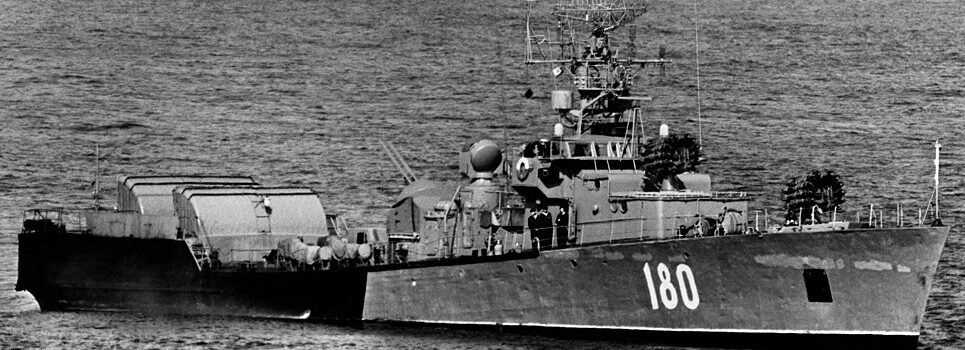
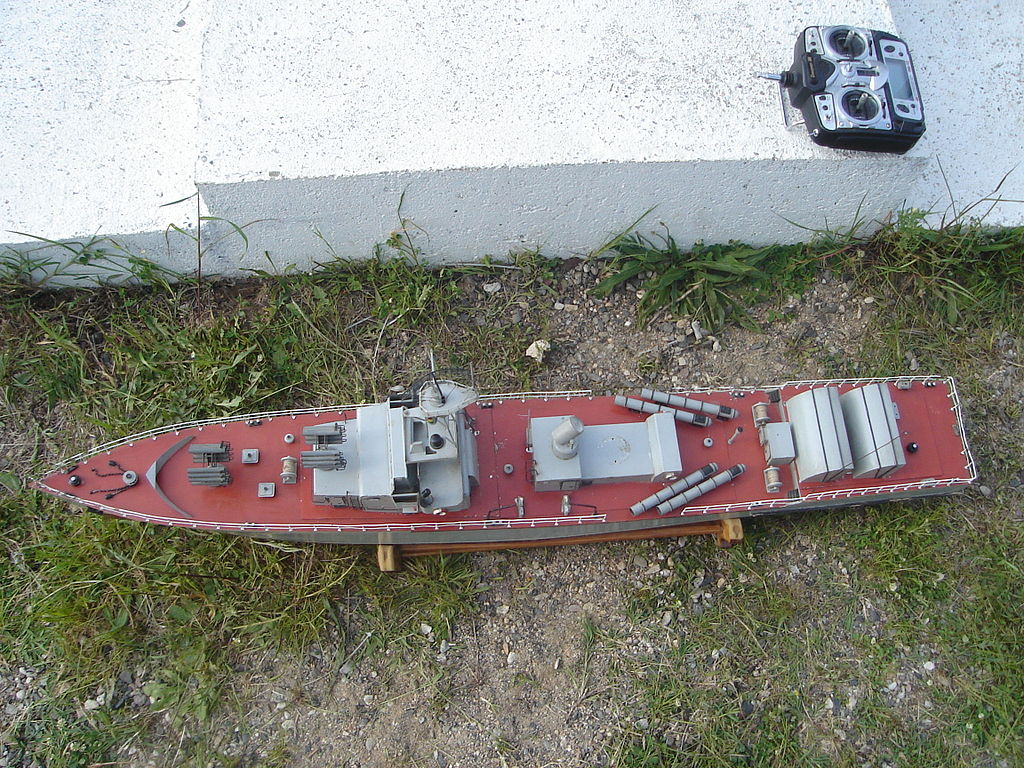

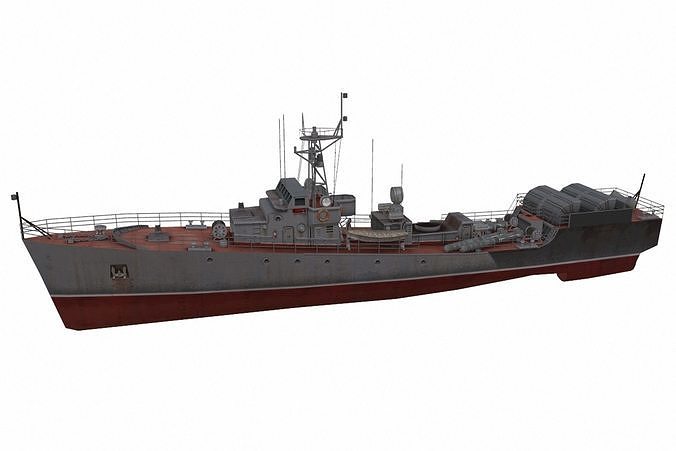
 Latest Facebook Entry -
Latest Facebook Entry -  X(Tweeter) Naval Encyclopedia's deck archive
X(Tweeter) Naval Encyclopedia's deck archive Instagram (@navalencyc)
Instagram (@navalencyc)





 French Navy
French Navy Royal Navy
Royal Navy Russian Navy
Russian Navy Armada Espanola
Armada Espanola Austrian Navy
Austrian Navy K.u.K. Kriegsmarine
K.u.K. Kriegsmarine Dansk Marine
Dansk Marine Nautiko Hellenon
Nautiko Hellenon Koninklije Marine 1870
Koninklije Marine 1870 Marinha do Brasil
Marinha do Brasil Osmanlı Donanması
Osmanlı Donanması Marina Do Peru
Marina Do Peru Marinha do Portugal
Marinha do Portugal Regia Marina 1870
Regia Marina 1870 Nihhon Kaigun 1870
Nihhon Kaigun 1870 Preußische Marine 1870
Preußische Marine 1870 Russkiy Flot 1870
Russkiy Flot 1870 Svenska marinen
Svenska marinen Søværnet
Søværnet Union Navy
Union Navy Confederate Navy
Confederate Navy Armada de Argentina
Armada de Argentina Imperial Chinese Navy
Imperial Chinese Navy Marinha do Portugal
Marinha do Portugal Mexico
Mexico Kaiserliche Marine
Kaiserliche Marine 1898 US Navy
1898 US Navy Sovietskiy Flot
Sovietskiy Flot Royal Canadian Navy
Royal Canadian Navy Royal Australian Navy
Royal Australian Navy RNZN Fleet
RNZN Fleet Chinese Navy 1937
Chinese Navy 1937 Kriegsmarine
Kriegsmarine Chilean Navy
Chilean Navy Danish Navy
Danish Navy Finnish Navy
Finnish Navy Hellenic Navy
Hellenic Navy Polish Navy
Polish Navy Romanian Navy
Romanian Navy Turkish Navy
Turkish Navy Royal Yugoslav Navy
Royal Yugoslav Navy Royal Thai Navy
Royal Thai Navy Minor Navies
Minor Navies Albania
Albania Austria
Austria Belgium
Belgium Columbia
Columbia Costa Rica
Costa Rica Cuba
Cuba Czechoslovakia
Czechoslovakia Dominican Republic
Dominican Republic Haiti
Haiti Hungary
Hungary Honduras
Honduras Estonia
Estonia Iceland
Iceland Eire
Eire Equador
Equador Iran
Iran Iraq
Iraq Latvia
Latvia Liberia
Liberia Lithuania
Lithuania Mandchukuo
Mandchukuo Morocco
Morocco Nicaragua
Nicaragua Persia
Persia San Salvador
San Salvador Sarawak
Sarawak Uruguay
Uruguay Venezuela
Venezuela Zanzibar
Zanzibar Warsaw Pact Navies
Warsaw Pact Navies Bulgaria
Bulgaria Hungary
Hungary

 Bundesmarine
Bundesmarine Dutch Navy
Dutch Navy Hellenic Navy
Hellenic Navy Marina Militare
Marina Militare Yugoslav Navy
Yugoslav Navy Chinese Navy
Chinese Navy Indian Navy
Indian Navy Indonesian Navy
Indonesian Navy JMSDF
JMSDF North Korean Navy
North Korean Navy Pakistani Navy
Pakistani Navy Philippines Navy
Philippines Navy ROKN
ROKN Rep. of Singapore Navy
Rep. of Singapore Navy Taiwanese Navy
Taiwanese Navy IDF Navy
IDF Navy Saudi Navy
Saudi Navy Royal New Zealand Navy
Royal New Zealand Navy Egyptian Navy
Egyptian Navy South African Navy
South African Navy






























 Ukrainian Navy
Ukrainian Navy dbodesign
dbodesign